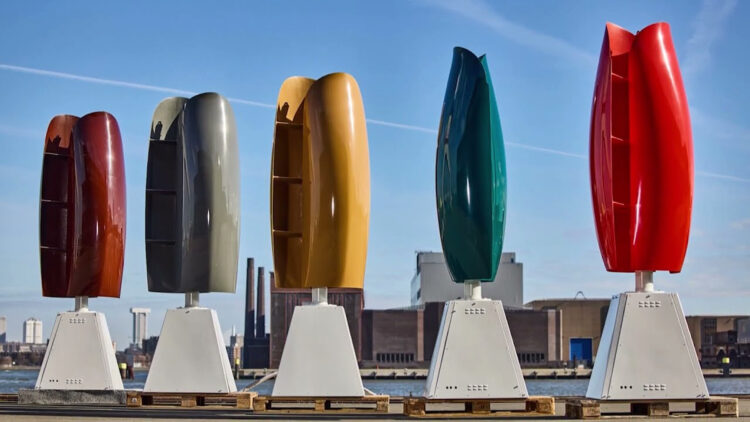The introduction of tulip-shaped wind turbines represents a significant advancement in the renewable energy sector. These small yet innovative devices not only promise to transform energy production in urban areas but also aim to address the limitations associated with traditional solar panels and larger wind turbines. By combining aesthetic appeal with enhanced functionality, these turbines could lead us towards a more sustainable future.
Flower Turbines: A new green solution
Developed by the company of the same name based in Lubbock, Texas, Flower Turbines are designed with a unique “Bouquet Effect,” where the performance of individual turbines is amplified by their proximity to one another. For instance, five turbines positioned together produce up to 228% more energy compared to five turbines spaced apart, making them especially effective in urban environments with restricted space.
These flower-inspired turbines can begin generating electricity at wind speeds as low as 1.57 miles per hour and are engineered to withstand extreme conditions; they have been evaluated for durability at speeds of up to 120 miles per hour. Additionally, their streamlined design reduces turbulence and enhances airflow, enabling optimal energy capture even in difficult environments.
The functionality of Flower Turbines extends beyond just wind energy. They can be designed to integrate seamlessly with solar panels, providing a complementary energy solution that maximizes output throughout different times of day and throughout the seasons. This combination minimizes reliance on battery storage, resulting in more efficient energy use.
With a design life of 40 years and a relatively light weight of approximately 44.1 pounds, these turbines can be installed on rooftops or in gardens, making them an appealing option for both residential and commercial energy requirements.
Exploring the unique advantages of Flower Turbines
These Flower Turbines boast significant advantages. This includes:
Aesthetic appeal: They feature a unique tulip shape that enhances their visual appeal, allowing them to blend into urban and suburban settings while preserving landscape beauty. This aesthetic can help promote greater acceptance of renewable energy within local communities.
Noise reduction and low cut-in speed: Notably, these turbines operate quietly, addressing noise pollution—a common issue associated with traditional wind turbines—making them ideal for residential neighborhoods. Their low cut-in speed enables energy production in light winds, optimizing energy capture when traditional turbines may fail.
Enhanced efficiency and durability: The Bouquet Effect allows multiple Flower Turbines to work together, significantly boosting overall energy output. Engineered for durability, they can withstand high wind speeds and various weather conditions, ensuring consistent energy generation throughout the year. Their compact design also allows for versatile installation options on rooftops or in gardens, making them suitable for a wide range of environments.
These turbines are groundbreaking, but there are still challenges to face
Flower Turbines have several drawbacks as well. The initial expense of purchasing them is costly, ranging from $1,334.13 to nearly $48,000, depending on the quantity. This may deter potential buyers despite their efficiency in clustered setups. Regular maintenance checks are also required to ensure optimal performance throughout their 40-year lifespan, potentially incurring additional costs.
Another challenge is the limited availability of wind in certain regions, which can reduce the turbines’ efficacy and overall energy output. Although they are designed for urban areas, adequate space is required to install multiple units and fully leverage the Bouquet Effect.
Finally, performance can fluctuate based on local wind conditions, making energy forecasting more complicated compared to more consistent renewable sources such as solar energy.
Nevertheless, the potential of Flower Turbines to revolutionize energy production is encouraging. Their innovative design and functionality offer hope for a greener future. Embracing such solutions may lead to sustainable progress.

